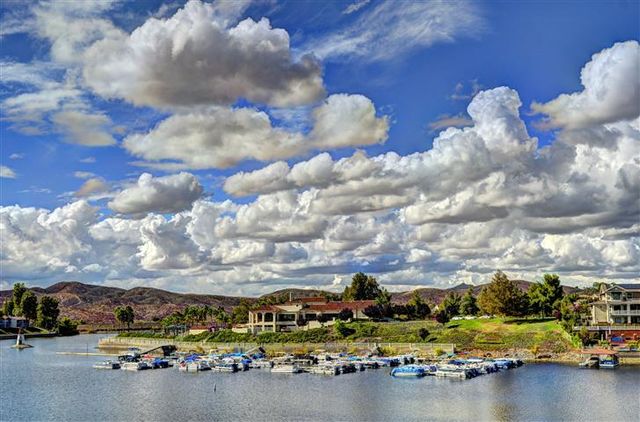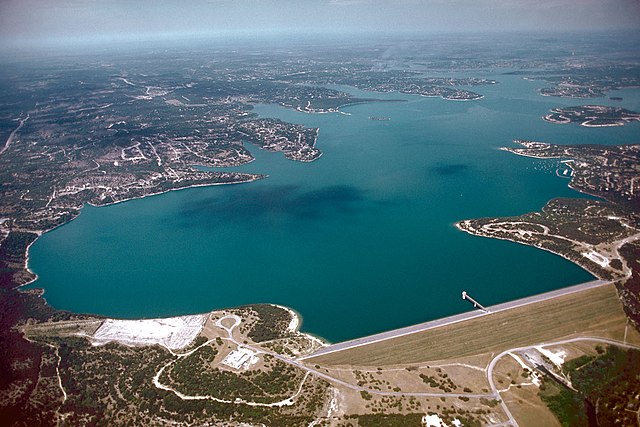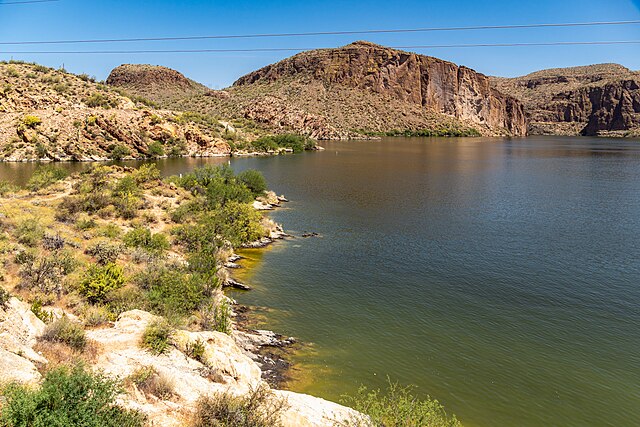Canyon Lake, nestled in the heart of Texas Hill Country, offers visitors a unique blend of natural beauty and diverse weather patterns that make it a year-round destination. Understanding the local climate is crucial for planning your perfect getaway, whether you’re looking to enjoy water activities, hiking adventures, or simply relaxing by the lake.
This comprehensive guide will walk you through everything you need to know about Canyon Lake weather, from seasonal variations to the best times for specific activities. We’ll explore how the area’s geography influences its climate and provide practical insights to help you make the most of your visit.
Understanding Canyon Lake’s Unique Climate Patterns
Canyon Lake experiences a humid subtropical climate characterized by hot summers and mild winters. The area’s weather is influenced by its location in central Texas, where continental and maritime air masses frequently interact, creating dynamic weather conditions throughout the year.
The lake itself plays a significant role in moderating local temperatures, creating a microclimate that can differ slightly from surrounding areas. This body of water helps keep temperatures more stable, providing cooler conditions in summer and slightly warmer temperatures during winter months.
Geographic Factors Affecting Weather
The Hill Country topography surrounding Canyon Lake creates unique weather patterns that visitors should understand. The rolling hills and valleys can channel wind patterns, creating localized temperature variations and affecting precipitation distribution across the area.
Elevation changes around the lake, though modest, contribute to temperature differences between different areas. Higher elevations typically experience slightly cooler temperatures, while lower areas near the water tend to be more humid and can feel warmer during summer months.
Seasonal Weather Overview
Canyon Lake’s weather follows distinct seasonal patterns that make each time of year unique for visitors. Spring brings mild temperatures and occasional thunderstorms, while summer delivers hot, humid conditions perfect for water activities. Fall offers comfortable temperatures and beautiful scenery, and winter provides mild conditions with occasional cold fronts.
Understanding these seasonal patterns helps visitors pack appropriately and plan activities that align with expected weather conditions. Each season offers different advantages for various outdoor pursuits and recreational activities.
Spring Weather at Canyon Lake (March-May)
Spring at Canyon Lake is characterized by pleasant temperatures and increasing daylight hours, making it one of the most popular times to visit. The season brings a refreshing change from winter’s cooler temperatures, with wildflowers blooming throughout the Hill Country.
March typically sees temperatures ranging from the mid-50s to low 70s Fahrenheit, gradually warming as the month progresses. April and May continue this warming trend, with highs often reaching the 80s and comfortable nighttime temperatures in the 60s.
Temperature Ranges and Conditions

Spring temperatures at Canyon Lake are generally mild and comfortable for most outdoor activities. Daytime highs average between 70-85°F, while nighttime lows typically range from 55-65°F. These moderate temperatures make spring ideal for hiking, camping, and water activities.
The warming trend throughout spring means early March can still feel quite cool, especially in the mornings and evenings. By May, temperatures begin approaching summer levels, with some days reaching the low 90s, particularly later in the month.
Rainfall and Precipitation Patterns
Spring brings the most variable weather conditions to Canyon Lake, with frequent thunderstorms and occasional severe weather. The area receives significant rainfall during this season, which contributes to the lush green landscape and helps maintain optimal lake levels for recreational activities.
Thunderstorms are common in late afternoon and evening hours, often bringing heavy rain, lightning, and occasionally hail. These storms can develop quickly, so visitors should monitor weather forecasts and have indoor backup plans for outdoor activities.
Summer Weather Conditions (June-August)
Summer at Canyon Lake brings hot, humid conditions that make water activities extremely popular. This season represents the peak tourist period, with families and water enthusiasts flocking to the lake to escape the heat.
Temperatures during summer months consistently reach the 90s and often exceed 100°F during heat waves. The high humidity levels can make conditions feel even hotter, with heat index values sometimes reaching dangerous levels.
Heat and Humidity Levels
Summer heat at Canyon Lake can be intense, with daytime temperatures regularly exceeding 95°F and nighttime temperatures rarely dropping below 75°F. The humidity levels, often above 70%, make the heat feel more oppressive and can lead to rapid dehydration if precautions aren’t taken.
The lake provides some relief from the heat, both through water activities and the slight cooling effect of the large body of water. However, visitors should still take precautions against heat-related illness, including staying hydrated, seeking shade, and limiting outdoor activities during peak heat hours.
Thunderstorm Activity
Summer thunderstorms at Canyon Lake can be dramatic and potentially dangerous. These storms often develop in late afternoon or evening hours, bringing heavy rain, lightning, and strong winds. While these storms can provide temporary relief from the heat, they can also create hazardous conditions for boaters and swimmers.
Lightning strikes are a serious concern during summer thunderstorms, and visitors should seek shelter immediately when storms approach. The combination of water activities and electrical storms requires extra caution and awareness of changing weather conditions.
Safety Considerations for Summer Weather
Heat safety becomes paramount during Canyon Lake’s summer months. Visitors should plan outdoor activities for early morning or late evening hours when temperatures are more manageable. Staying hydrated is crucial, and recognizing signs of heat exhaustion or heat stroke can prevent serious health issues.
Sun protection is essential, as the reflection off the water can intensify UV exposure. Wearing sunscreen, protective clothing, and seeking shade during peak sun hours helps prevent sunburn and heat-related illness.
Fall Weather Patterns (September-November)
Fall brings some of the most pleasant weather conditions to Canyon Lake, with decreasing temperatures and humidity levels that make outdoor activities comfortable again. This season is often considered the second-best time to visit, offering excellent weather without the crowds of summer.
September still feels quite warm, with temperatures often reaching the 80s and 90s, but the humidity begins to decrease. October and November see more dramatic temperature drops, with comfortable daytime highs in the 70s and 80s and cool, pleasant evenings.
Temperature Transitions
The transition from summer to fall weather at Canyon Lake happens gradually, with September often feeling like an extension of summer. October typically brings the first significant cool fronts, creating more comfortable conditions for hiking and outdoor activities.
November weather can be variable, with some days feeling quite warm while others bring a taste of winter. This variability makes fall an excellent time for visitors who enjoy moderate temperatures and want to avoid extreme heat or cold.
Autumn Storm Systems

Fall storm systems at Canyon Lake are generally less intense than summer thunderstorms but can still bring significant rainfall. These storms often arrive with cold fronts, bringing cooler temperatures and sometimes lasting several days.
The changing weather patterns during fall create dynamic skies and beautiful atmospheric conditions that photographers and nature enthusiasts particularly enjoy. These storms help maintain lake levels and contribute to the area’s natural beauty.
Winter Weather at Canyon Lake (December-February)
Winter at Canyon Lake is characterized by mild temperatures and occasional cold fronts that can bring dramatic temperature swings. While snow is rare, the area can experience freezing temperatures, particularly during strong cold fronts from the north.
Average winter temperatures range from the 40s to 60s Fahrenheit, making it comfortable for many outdoor activities. However, cold fronts can bring temperatures down to the 20s or 30s, creating conditions that require warm clothing and careful planning.
Cold Fronts and Temperature Drops
Winter cold fronts at Canyon Lake can cause dramatic temperature swings, sometimes dropping 30-40 degrees in just a few hours. These fronts typically arrive with strong north winds and can make water activities uncomfortable or dangerous.
The frequency and intensity of cold fronts vary from year to year, but visitors should be prepared for sudden weather changes. Layered clothing and flexible activity plans help ensure comfort regardless of temperature fluctuations.
Precipitation and Rare Snow Events
Winter precipitation at Canyon Lake typically arrives as rain, though freezing rain and sleet can occasionally occur during strong cold fronts. Snow is rare but not unheard of, with light snowfall occurring every few years.
When freezing precipitation does occur, it can create hazardous driving conditions and make outdoor activities dangerous. Visitors should monitor weather forecasts closely during winter months and be prepared for changing conditions.
Best Times to Visit Canyon Lake Based on Weather
Choosing the best time to visit Canyon Lake depends on your preferred activities and weather tolerance. Spring and fall offer the most comfortable conditions for most visitors, while summer provides ideal conditions for water activities despite the heat.
Weather preferences vary among visitors, with some enjoying the intense summer heat for water sports while others prefer the mild conditions of spring and fall for hiking and camping. Understanding seasonal weather patterns helps visitors choose the optimal time for their specific interests.
Optimal Weather Windows for Activities
Different activities at Canyon Lake are best enjoyed during specific weather conditions. Understanding these optimal windows helps visitors plan their trips for maximum enjoyment and safety.
Water activities thrive during warm weather months, while hiking and camping are most comfortable during cooler seasons. Fishing can be excellent year-round, with different seasonal patterns affecting fish behavior and feeding.
Water Sports and Swimming Conditions
Water sports and swimming at Canyon Lake are best enjoyed from May through September when water temperatures are warmest and air temperatures support comfortable conditions. Summer months provide ideal conditions for boating, skiing, and swimming, despite the heat.
Spring and fall can also offer good water conditions, though morning and evening activities may be more comfortable than midday exposure. Water temperatures lag behind air temperatures, staying cool longer in spring and remaining warm later into fall.
Hiking and Outdoor Recreation
Hiking and outdoor recreation at Canyon Lake are most enjoyable during spring and fall when temperatures are moderate and humidity levels are lower. These seasons offer comfortable conditions for extended outdoor activities without the extreme heat of summer.
Winter can also provide excellent hiking conditions, particularly between cold fronts when temperatures are mild and humidity is low. The lack of summer crowds during winter months can make for a more peaceful outdoor experience.
Weather-Related Activities and Planning

Understanding Canyon Lake’s weather patterns enables visitors to plan activities that align with expected conditions. Each season offers unique opportunities and challenges that affect activity choices and preparation needs.
Successful trip planning involves considering not just average conditions but also the potential for extreme weather events. Having backup plans for indoor activities during storms or extreme temperatures ensures trip success regardless of weather conditions.
Seasonal Activity Recommendations
Each season at Canyon Lake offers distinct advantages for different activities. Spring wildflower viewing, summer water sports, fall hiking, and winter fishing each provide unique experiences tied to seasonal weather patterns.
Planning activities around weather conditions enhances safety and enjoyment. Understanding when to expect thunderstorms, heat waves, or cold fronts helps visitors prepare appropriately and adjust plans as needed.
Climate Change Impact on Canyon Lake Weather
Climate change is affecting weather patterns at Canyon Lake, with trends toward hotter summers and more variable precipitation patterns. Understanding these changes helps visitors prepare for potentially more extreme weather conditions.
Rising temperatures and changing precipitation patterns may affect the timing and intensity of seasonal weather events. Visitors should stay informed about current conditions and be prepared for weather that may differ from historical patterns.
Weather Forecasting and Monitoring Resources
Reliable weather forecasting is essential for safe and enjoyable visits to Canyon Lake. Multiple resources provide accurate, up-to-date information about current conditions and forecasts.
Modern weather monitoring technology provides detailed forecasts that help visitors plan activities and prepare for changing conditions. Understanding how to interpret weather forecasts and warnings ensures safety and trip success.
Reliable Weather Sources for Canyon Lake
Several reliable sources provide accurate weather information for Canyon Lake, including the National Weather Service, local news stations, and specialized weather apps. These sources offer detailed forecasts, severe weather warnings, and current conditions.
Mobile weather apps can provide real-time updates and location-specific forecasts that help visitors make informed decisions about activities and safety. Having multiple information sources ensures access to the most current and accurate weather data.
Conclusion
Canyon Lake’s diverse weather patterns create a destination that offers something for every visitor throughout the year. From the mild springs perfect for wildflower viewing to the hot summers ideal for water activities, each season brings unique opportunities and challenges.
Understanding these weather patterns enables visitors to plan successful trips that align with their preferences and activities. Whether you prefer the comfortable temperatures of spring and fall or the intense heat that makes summer water activities so refreshing, Canyon Lake’s climate offers experiences for every weather preference.
The key to enjoying Canyon Lake regardless of the season is preparation and flexibility. By understanding typical weather patterns, monitoring current forecasts, and having backup plans for extreme conditions, visitors can make the most of their time at this beautiful Texas destination.
Remember that weather can be unpredictable, and conditions can change rapidly. Stay informed, prepare appropriately, and remain flexible in your plans to ensure a safe and enjoyable visit to Canyon Lake throughout the year.
Frequently Asked Questions (FAQs)
Q1: What is the best month to visit Canyon Lake for comfortable weather?
A1: April and October typically offer the most comfortable weather at Canyon Lake, with mild temperatures in the 70s-80s, lower humidity, and minimal extreme weather events. These months provide ideal conditions for both water activities and outdoor recreation.
Q2: Does Canyon Lake ever freeze during winter?
A2: Canyon Lake rarely freezes completely due to its size and depth, but shallow areas and coves can develop ice during extreme cold fronts. Air temperatures can drop below freezing several times each winter, but sustained freezing periods are uncommon.
Q3: How often does Canyon Lake experience severe thunderstorms?
A3: Canyon Lake experiences severe thunderstorms most frequently during spring and early summer months, with the peak season being April through June. These storms can bring heavy rain, hail, and dangerous lightning, requiring visitors to monitor weather conditions closely.
Q4: What should I pack for a summer visit to Canyon Lake?
A4: Summer visits require sun protection (sunscreen, hats, sunglasses), lightweight breathable clothing, plenty of water, and cooling items like portable fans or cooling towels. Don’t forget swimwear and water shoes for lake activities.
Q5: Are there any weather-related safety concerns I should know about?
A5: Key safety concerns include lightning during thunderstorms, heat-related illness during summer months, and sudden temperature drops during winter cold fronts. Always monitor weather forecasts, have emergency plans, and know the signs of heat exhaustion and hypothermia.

